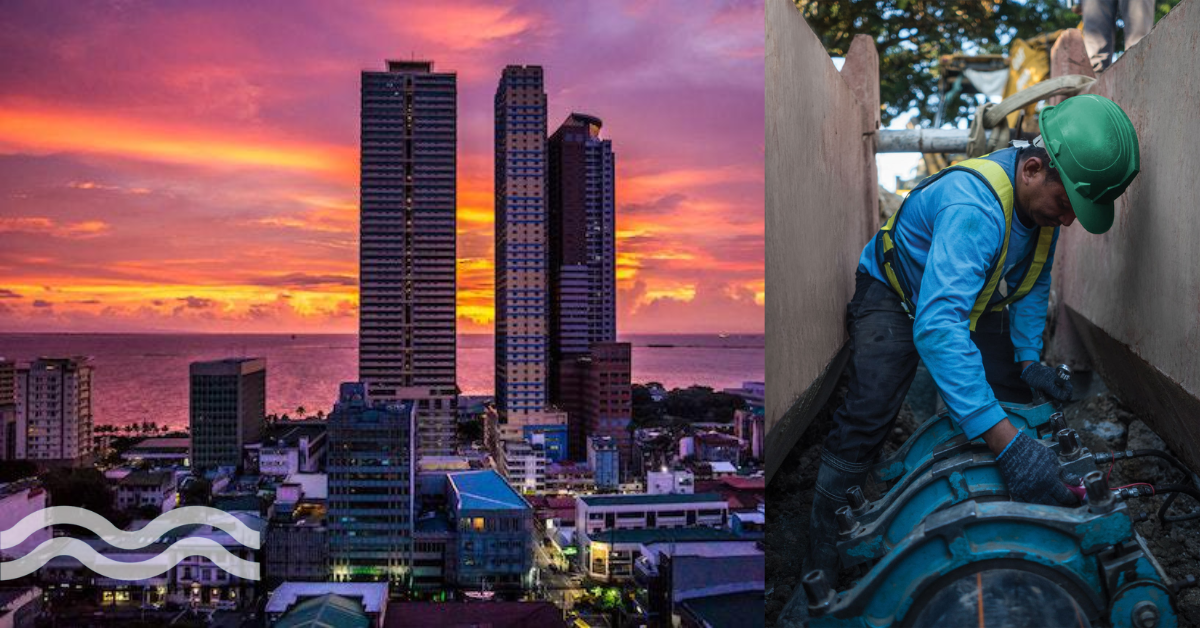Manila Water surpasses global benchmarks in water loss reduction
Philippines water utility Manila Water has made remarkable progress in reducing non-revenue water (NRW) levels in the country, positioning itself on par with water utilities in more developed countries.
Surpassing World Bank benchmarks
NRW refers to the volume of water that is lost or unaccounted for in a distribution network. It includes water lost through leaks, unauthorised connections, or inaccurate metering. Manila Water has managed to reduce its NRW from an inherited level of 63 per cent in 1997 to 12.69 per cent in 2022. This surpasses the World Bank's benchmark of 25 per cent or lower and the 15 per cent in developed countries such as Japan, Germany and England.
The water utility claims its success in reducing NRW can be attributed to a multi-pronged approach, combining proactive technical solutions, engineering advancements and social interventions.
These included network reconfiguration, accurate measurement of supply volumes, active leakage control and repairs, supply and pressure management and meter management programmes.
Modern and innovative systems and equipment to detect and address leaks as they occur also ensure efficient water distribution, according to the utility.
Rehabilitation efforts
Rehabilitating aging primary lines and maintaining the integrity of its mainlines was also key to achieving positive results. The utility's regular maintenance and rehabilitation efforts have significantly reduced the occurrence of breakages in the water system.
In cases where leaks do happen, Manila Water says it ensures expedient repairs, often fixing pipe bursts within 24 hours. This commitment to timely intervention minimizes water loss and enhances the overall system reliability, it says.
“Water is not unlimited. It is a finite resource; hence, we see to it that our NRW remains at manageable levels and at par with global standards, if not better,” said Jeric Sevilla, group director for corporate communications affairs at Manila Water group.
“We care for every drop, knowing that every drop we save goes to our customers.”
Community relationships
Building strong relationships with the community has been instrumental in Manila Water's efforts to reduce NRW it claims. By actively engaging with stakeholders, the utility says it has encouraged the reporting of leaks and illegal connections, enabling it to act swiftly. It says the collaboration has fostered a sense of shared responsibility and accountability, creating a more efficient and reliable water network.
To further mitigate NRW and protect public health, the water utility has implemented what it says are strict measures to crack down on illegal connections. Such connections are prone to breakages and contamination due to the use of substandard materials. By eradicating these illegal connections, Manila Water has been able to not only reduce water losses but also ensures the delivery of clean and potable water to its customers.
Social initiatives to reduce NRW
Finally, social initiatives have also helped Manila Water in its NRW journey. A social flagship programme called Tubig para sa Barangay,(TPSB) has seen the utility partner with marginalised communities to provide affordable and safe water connections.
In 2022 alone, the programme completed 29 projects with 826 new water connections, which are now providing clean and potable water to 1,222 low-income households. The TPSB programme is now benefiting nearly two million residents from low-income communities after completing more than 750 TPSB projects.
Manila Water's achievement in reducing NRW levels demonstrates the effectiveness of its comprehensive approach to NRW management.
We promise never to send you spam and you can unsubscribe at any time!
